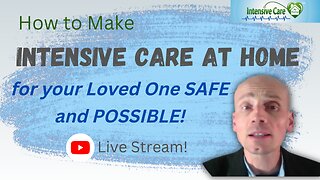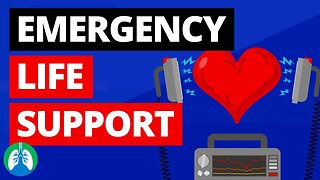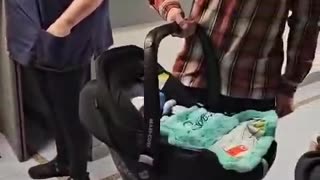10 things that need to be in place for INTENSIVE CARE AT HOME! Live stream!
https://intensivecareathome.com/10-things-that-need-to-be-in-place-before-intensive-care-at-home/
10 things that need to be in place for INTENSIVE CARE AT HOME! Live stream!
Book your free 15 minute phone consultation here
http://intensivecarehotline.com/scheduling-appointment/
Call directly 24/7
+1 415-915-0090 USA/Canada
+44 118 324 3018 UK
+6141 094 2230 Australia
Email support@intensivecarehotline.com
Get 1:1 consulting and advocacy
1:1 phone counselling
http://intensivecarehotline.com/one-on-one-counselling/
Become a member for families of critically ill Patients in Intensive Care
https://intensivecarehotline.com/intensivecaresupport-org-membership/
Immediate action steps http://intensivecarehotline.com/take-control-take-charge/immediate-action-steps/
https://intensivecareathome.com
Good morning. Good afternoon. Hello everyone and welcome to another YouTube live stream from Intensive Care at Home and Intensive Care Hotline. My name is Patrik Hutzel from Intensive Care at Home and Intensive Care Hotline and in today’s live stream, I want to talk about 10 things that need to be in place before intensive care at home can happen.
So before I dive right into it, you might be wondering, what makes me qualified to talk about this topic and just want to quickly talk about what I’ve done to this point. I’m a critical care nurse by background. I’ve worked in critical care for over 20 years in three different countries, and I also have a lot of experience with Intensive Care at Home services.
I was part of setting up Intensive Care at Home services in the early 2000s in Germany and I have also set up Intensive Care at Home successfully here in Australia. And we are now trying to branch out into other countries, including the UK and the United States and Canada. It’s not there yet, but we are successfully operating Intensive Care at Home nursing in Melbourne, Australia, as well as in Sydney, Australia and we’re now starting in Brisbane as well.
As part of my intensive care nursing experience, I worked as a nurse unit manager for over five years and I worked in a range of intensive care settings, as I said, worked with Intensive Care at Home and still working with Intensive Care at Home. I worked in trauma ICU, cardiac ICU, general ICU, neuro ICU, but also in pediatric ICU. So I have a wide range of experience as part of my work in intensive care.
Now, in today’s topic again, I do want to talk about 10 things that need to happen or need to be in place before Intensive Care at Home can happen. And I want to dive right into it. Please ask questions as we go along, type them into your chat pad, and maybe at the end of the live recording, if we still have time, maybe you can also call me and I’ll give you my phone number and at the end of the call, and maybe you can call me even on the live stream. So we can then answer your question on the live stream.
So let’s dive right into the 10 things that need to happen before Intensive Care at Home can happen. So let’s just look at the conditions that we are predominantly looking after with Intensive Care at Home, and let’s break this down. So, the most common clients we are looking after at home for Intensive Care at Home is somebody that’s on a ventilator with a tracheostomy, that is bread and butter for us.
Those are the most clients we’re looking after. It’s someone that has spent weeks, sometimes months in intensive care. They’re unable to come off the ventilator. They’re unable to have the tracheostomy removed and then they can continue intensive care in the home because those patients have nowhere to go to. They can’t go to a hospital ward. They can’t go to a hospital floor.
In the United States, if you’re watching this and you are in the United States, they can often go to LTAC. But you might have heard me say this before, LTACs are just a disaster area. They’re a better version of a nursing home, and it’s just a disaster waiting to happen at LTAC.
Here in Australia, obviously, if patients are stuck in intensive care on ventilation with tracheostomy, they can go home with our service, Intensive Care at Home, and we can continue with intensive care level treatment at home on a nursing level, or we can potentially wean them off the ventilator at home. We’ve certainly done this successfully and we’ve also had patients successfully decannulated at home from the tracheostomy, and then they get discharged from our service, which is a massive success.
Continuation...
https://intensivecareathome.com/10-things-that-need-to-be-in-place-before-intensive-care-at-home/
-
 55:04
55:04
Intensive Care at Home
1 year agoHow to Make INTENSIVE CARE AT HOME for your Loved One Safe and Possible! Live stream!
77 -
 39:30
39:30
Intensive Care at Home
1 year agoHow to discharge from intensive care to intensive care at home! Live stream!
32 -
 4:26
4:26
Respiratory Therapy Zone
2 years agoEmergency Cardiovascular Life Support (Quick Explainer Video)
12 -
 3:20
3:20
matthewlennonhealer
4 years agoOur Aim For Our Live Healing Stream...
2 -
 47:45
47:45
CourtenayTurner
6 months agoEp.334: Patient Advocacy & Building Parallel Health Systems w/ Graith Care | The Courtenay Turner Podcast
584 -
 4:35
4:35
minizVlog
11 months agoExploring South Korea's Advanced Healthcare System | Hospital Visit Vlog
4 -
 1:12:36
1:12:36
Freedom Junkie Radio - Betsy Dewey
1 year agoLaura Bartlett - How to advocate for yourself or a loved one in the hospital. Crucial information.
1.4K2 -
 1:25:34
1:25:34
Brave TV
1 year agoBraveTV STREAM - February 1, 2023 - AMERICA’S CHRONIC ILLNESS DILEMMA
4.46K7 -
 28:26
28:26
Visioning with JulieB. Ministries
5 months agoPodcast 01.15.24: Healing Your Loved Ones With This Technique
767 -
 0:50
0:50
Matthew Lennon Healer @ World Healing Centre
5 months agoMiracle Baby Cooper leaves the hospital & arrives home for the 1st time after beating all the odds
77